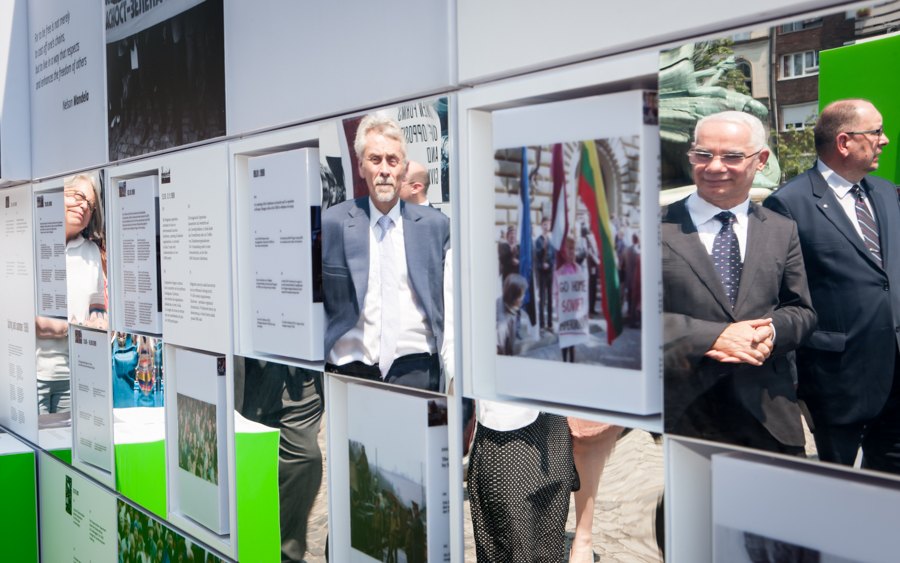The exhibition was officially opened in Budapest in front of the National Museum on 2 July by Zoltán Balog, Hungarian Minister of Human Resources.
The exhibition “Freedom Express. Roads to 1989. East-Central Europe 1939-1989” was officially opened in Budapest in front of the National Museum on 2 July by Zoltán Balog, Hungarian Minister of Human Resources, together with dr László Csorba, director of the Hungarian National Museum, dr Iván Bába, the Hungarian coordinator of the European Network Remembrance and Solidarity, Lieselore Cyrus, Ambassador of the German Federal Republic in Hungary and Roman Kowalski, Ambassador of the Republic of Poland in Hungary. More than 100 honourable guests were present at the ceremony.
During the opening ceremony Minister Zoltán Balog said that the duty of those who survived the dictatorship is to keep the memory of the difficult past and pass it on to next generations. This is our moral obligation. He also stressed that the communication about the past only makes sense when something good comes as a result of it. That is why Minister Balog concluded with a question about the role of remembrance, which is the key issue in the work of the European Network Remembrance and Solidarity.
The fundamental objective of the Freedom Express campaign, initiated by the ENRS, is to create a common narrative of European history – said Roman Kowalski, Ambassador of Poland in Hungary. He added that such projects contribute to shaping the dialogue and creating the complementary narration about the history of the 20th century, in which there is room for a multiplicity of perspectives and interpretations. This dialogue supports our identity, giving the chance to future generations to avoid the mistakes of the past – Ambassador Kowalski concluded.
Dr Iván Bába stressed that today's perception of the communist past only through the prism of humour and everyday life, can be misleading. During the communist past, the sense of humour played a crucial role and had a clearly defined therapeutic effect. With the help of Polish posters, Hungarian films and various other forms of artistic expression we tried to remain independent and defend ourselves. Today communist period returns in a specific pop version. It is becoming more and more popular amongst young people and unfortunately promotes a distorted picture of the past - explained dr Bába.
Ambassador of the German Federal Republic in Hungary, Lieselore Cyrus, observed that this exhibition is a signpost for the future, teaches us how to search for freedom. The idea of freedom and democracy must remain our compass – she stated.
The exhibition, designed by historians associated with European Network Remembrance and Solidarity, documents the complicated process through which this part of Europe regained its freedom from communist dictatorship. Presented earlier in Berlin, Brussels, and Warsaw the exhibition concentrates on various ways in which civil liberties were limited in the former communist bloc and on attempts made to regain them. It focuses especially on the question of what connects and divides remembrance of the events that preceded the fall of communism in Central and Eastern Europe.
The exhibition is available for visitors in the park outside the National Museum till 8 August.
